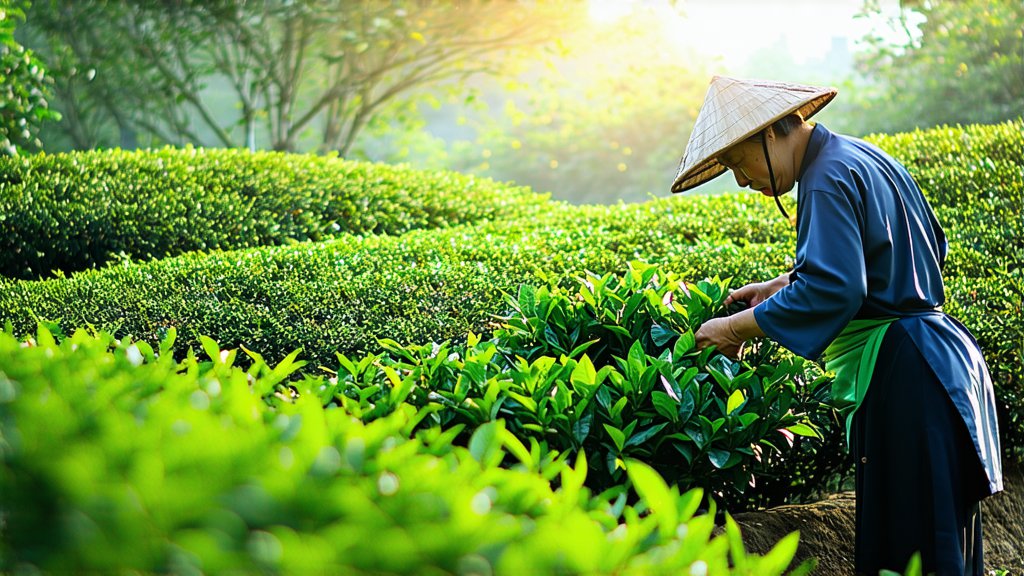
In the vast landscape of global tea varieties, few can rival the allure and depth of flavor offered by China's Keemun black tea. Nestled in the picturesque hills of Anhui Province, this tea has earned its place as one of the most revered and distinctive members of the black tea family. Its history spans centuries, its production methods are steeped in tradition, and its taste profile is unparalleled, making it a subject worthy of exploration for any aficionado or curious newcomer to the world of tea.
A Glimpse into History
The origins of Keemun black tea trace back to the Qing Dynasty, around the mid-19th century, when a local farmer named Hui Changyu discovered that his tea leaves had accidentally fermented, resulting in a unique dark color and robust flavor. This serendipitous event marked the birth of what would become known as "black tea" in the West, though in China, it is referred to as "hong cha," meaning red tea due to its reddish brew. The name "Keemun" itself is derived from the pinyin transliteration of Qimen County, the region where this extraordinary tea first emerged. Over time, Keemun became synonymous with quality and sophistication, earning international acclaim and becoming a staple in British afternoon tea ceremonies.
Varieties and Characteristics
Keemun black tea is not a single entity but rather a category encompassing several grades, each with its own distinct characteristics. The highest grades, such as Keemun Hao Ya (Grade 1), consist of young, tender buds and leaves, yielding a more delicate and nuanced flavor profile. Lower grades, while still excellent in their own right, may include older leaves and stems, contributing to a bolder, more robust cup. What unites all Keemun teas, regardless of grade, is their signature tangerine-like aroma and smooth, malty taste, often accompanied by subtle hints of chocolate or caramel. These qualities make Keemun a versatile tea, equally enjoyable plain or with additions like milk and sugar.
The Art of Crafting Keemun
The magic of Keemun lies not only in its unique terroir but also in the meticulous craftsmanship involved in its production. The process begins with the careful selection of tea leaves from Camellia sinensis var. sinensis plants, typically grown on mountain slopes at elevations ranging from 600 to 1,200 meters. After harvesting, the leaves undergo several stages:
-
Withering: Freshly picked leaves are spread out thinly to allow them to lose moisture and become softer, enhancing their natural flavors.
-
Rolling: The withered leaves are then rolled either by hand or machine to break down cell walls, facilitating oxidation.
-
Oxidation: Exposed to the air, the rolled leaves undergo a chemical transformation where polyphenols react with oxygen, turning the leaves brown and developing complex flavors.
-
Drying: Finally, the oxidized leaves are dried to halt further oxidation and reduce moisture content, ensuring stability for storage and transport.
Each step requires precision and expertise, with experienced tea masters constantly monitoring temperature, humidity, and timing to achieve the perfect balance.
Savoring Keemun: A Guide to Appreciation
To truly appreciate Keemun black tea, one must engage in a mindful tasting experience. Here's a simple guide to help you unlock the full potential of your cup:
-
Preparation: Use freshly drawn, filtered water heated to just below boiling (around 95°C or 203°F). Measure approximately 2 grams of loose leaf tea per 150ml of water.
-
Infusion: Place the tea leaves in a preheated vessel. Pour hot water over the leaves gently, allowing them to unfurl slowly. Steep for 3-5 minutes, adjusting based on personal preference for strength.
-
Observation: As the tea steeps, observe the rich amber hue developing in the water, indicative of the tea's depth and complexity.
-
Aroma: Before sipping, take a moment to inhale deeply from your cup or raise it to your nose. Note the characteristic tangerine-like scent intertwined with earthy undertones.
-
Tasting: Take your first sip slowly, allowing the tea to coat your palate fully. Notice the initial sweetness followed by the lingering malty notes. Pay attention to the texture—Keemun should feel velvety smooth.
-
Aftertaste: After swallowing, focus on the aftertaste that remains in your mouth. A well-crafted Keemun will leave a pleasant, lasting impression.
-
Multiple Infusions: Don't discard the leaves after the first infusion; Keemun can be steeped multiple times, revealing different facets of its flavor profile with each brew.
In Conclusion
Keemun black tea stands as a testament to China's rich tea heritage and the artistry involved in tea making. From its humble beginnings in the misty mountains of Anhui to its esteemed status on the global stage, every aspect of Keemun tells a story of tradition, innovation, and a deep respect for nature's bounty. Whether you're a seasoned tea connoisseur or a casual sipper, exploring Keemun is an invitation to embark on a sensory journey that transcends borders and connects us all through the universal language of tea.